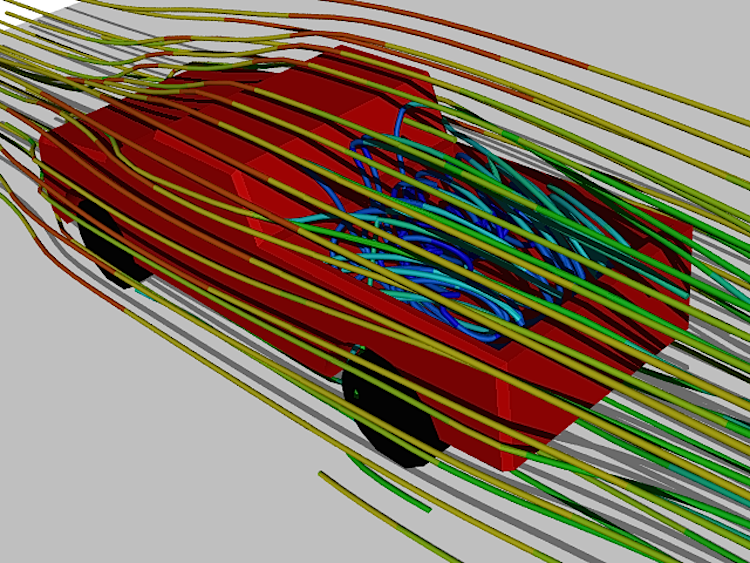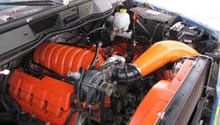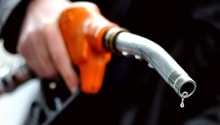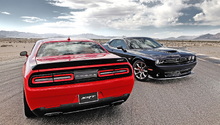Dodge Ram: How to Maximize MPG
Dodge Ram owners know that their truck is not going to get the MPG of a Prius. But with rising gasoline prices, they would like to be able to stretch a few more miles per gallon out of their fuel tank. This article suggests several ways to go about improving your Dodge Ram's MPG.
This article applies to the Dodge Ram (1994-present).
Back in 1972, the EPA started listing City and Highway MPG numbers based on their testing protocols. People were told that these were guidelines and that "Your mileage may vary." And, it usually did vary. MPG numbers did give the customer a way to gauge the relative MPG numbers of the vehicle they were considering versus others in that category. Dodge Ram buyers knew that their truck wasn't going to get the 124 MPG of the BMW i3 BEV. Nor were they going to get the 0.5 MPG of an M1A1 Abrams tank.
These days, owners of Dodge Rams report an average of 9-17 MPG, combined city and highway. When a buyer purchased a Dodge Ram in 1994, the average cost of a gallon of gas was $1.11. With the cost of gas going up by almost 200%, today's owners would like to squeeze a few more miles out of each gallon of gas. There are three ways to do this: modify your driving habits, modify your truck, or do both. Modifying your driving habits should take no time at all, but modifying your truck will take several hours.

Materials Needed
- If you intend to modify your truck, be sure you own, or have access to, a full set of mechanic's tools. Different manufacturers require different types and sizes of tools.
Let's take a look at the three ways to improve your MPG.
Step 1 – Modify your driving habits
This is the least expensive way to improve your gas mileage. It's suggested that you try this step first. You might be able to realize an increase in MPG without going to the expense of truck modifications.
- Make sure your tires are properly inflated. Poorly inflated tires can cut your MPG by 0.3% for every 1 psi drop in pressure. MPG can improve by 3.3% by keeping your tires inflated properly.
- Avoid "jack rabbit" starts. High RPMs burn more fuel. You're just getting to the speed limit faster.
- Try to maintain a steady speed to avoid accelerating and decelerating. Some owners suggest not pushing the gas pedal more than 1/3 of the way down.
- If you see that there is a stop ahead (congested traffic, stoplights, stop signs) coast up to them. This helps your MPG, and you have to stop anyway.
- Manufacturers work hard to lower the coefficient of drag on their vehicles to reduce wind resistance and improve MPG. You can reduce drag on your truck by closing the windows driving over 45 MPH. At highway speeds, 50% of the engine's power is being used to overcome drag. Putting a Tonneau cover on your truck bed also helps. Wind rushing over the cab roof flows down into the bed, increasing drag. A soft Tonneau cover conforms to the rushing wind to smooth it out. Consumer Reports disagrees on using a Tonneau, but many owners and truck sites recommend them.

- Your engine's performance also impacts your MPG numbers. Check your spark plugs for fouling. Make sure the air filter is clean.
- Many owners feel that they get better gas mileage with "regular" gas, not "premium" or ethanol.
- A number of owners also add Sea Foam SF-16 or Startron to their tank to "clean" engine parts.
Pro Tip
Try the "driving behavior modification" for two tankfuls to see if your MPG improves to your satisfaction. If not, move on to Step 2. This is where money is spent.
Step 2 – Modify your truck
If, after trying to drive with the goal of better fuel efficiency, you aren't seeing it, there are other ways to improve your MPG by modifying your Dodge Ram. They deal with improving engine performance and fuel efficiency. And most of them deal with improving air flow through from the air intake to the exhaust. These are modifications that Dodge Ram owners feel improve their MPG numbers.
- Install a K&N air filter. They allow a freer passage of air to the engine. Some owners opt to upgrade the stock air intake with a K&N air intake. They are designed to force more air into the engine, increasing horsepower. Increased horsepower can lead to getting to highway speeds more rapidly, improving fuel economy.

- Following along the increased performance route, many owners find that installing a performance Engine Control Unit (ECU) boosts both performance as well as fuel economy.
- A set of E3 spark plugs is often used to boost performance and fuel economy.
- Many owners complement these performance boosters with a Flo Master cat back dual exhaust system. It reduces back pressure on the exhaust manifold, improves performance, and can improve fuel economy.

Step 3 – Do both
Of course, there is a middle ground. This best chance to see a marked improvement in your truck's MPG is to do both. Making sure that you are getting every mile per gallon that's possible prepares you for the future.

Pro Tip
If you are going to modify your truck solely for improved MPG, be sure that that gas savings are worth the cost of the modifications.
Related Discussions and Sites
- How to Improve Gas Mileage in 5.7l Hemi - Dodgeforum.com
- Outdoorsman MPG 3.55 vs. 3.92? - Dodgeforum.com
- 2009 Ram 2500 5.7L Hemi MPG - Dodgeforum.com
- Need to Improve Gas Mileage - Dodgeforum.com
- Fuel Mileage for V-10 - Dodgeforum.com
- What are Ways to Increase Your MPG? - Dodgeforum.com
- Better Gas Mileage Dodge Ram - eHow.com
- How to Save Money on Gas - Consumerreports.org






